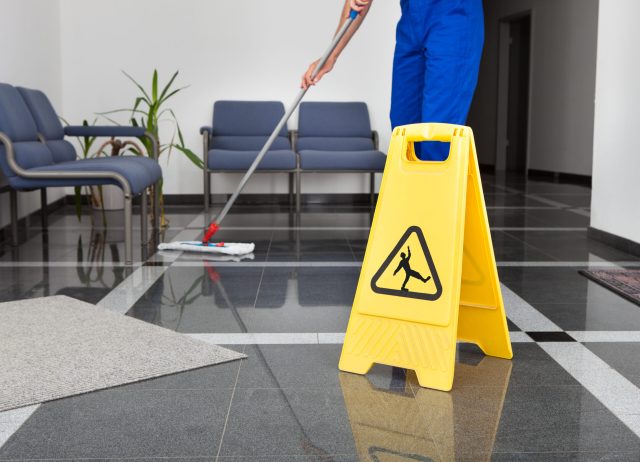
Typically, comfort and safety play a crucial role in achieving prosperity and success for your company. Thus, as a business owner or employer, it’s your responsibility to provide a comfortable and safe workplace for your employees. Doing so can help minimize the risks of accidents and injuries that can adversely impact your employees’ productivity and revenue.
If you want to improve safety in your workplace, below are the four steps to take from the beginning:
1. Clean Your Workplace
The first step in promoting better workplace safety is to maintain the cleanliness of your premises. By doing it, you can get rid of specific safety hazards. For example, if you clean and organize your office, your employees can avoid accidents caused by tangled wires, messy floors, stacked boxes, and improper storage of office equipment.
Moreover, to help maintain the cleanliness in your workplace, it’s also essential to perform regular inspections and risk assessment procedures. That way, you can detect and prevent injuries from happening at work.
2. Use Warning Signs And Labels
Now that you have a clean workplace, the next step is to put up warning signs and labels to ensure everyone’s safety in your commercial premises. Generally, safety signage can help keep your employees safe at work. It can be a perfect way of informing them about the safety risks you can face if you don’t take the necessary precautions.
Hence, once you find out all safety hazards, prepare to install signage around your workplace. For example, in the event of a fire or electrical emergency when you have to shut the power off, it’s crucial to familiarize which part of the panel should be turned off to avoid potential hazards. It makes labeling an essential component of workplace safety. However, if you want to get the most out of these labels to keep your premises safe, you need to familiarize some things when labeling panels. These can include many safety and identification labels.
Aside from electrical panel labels, you can also put up safety signs around your workplace, such as signs for dangerous chemicals, slippery floors, dangerous high voltage, and other warning labels. Ensure these signs and labels contain clear information to avoid specific hazards.
3. Conduct Employee Safety Training
Employee training is essential to improve the safety level in your workplace. When you educate your employees about what they should do and shouldn’t do to keep them safe, you can reduce the risk of dealing with specific dangerous encounters at work. The following are some critical training areas your employees should get familiar with:
- Equipment and Machinery Handling
- Emergency Drills
- First Aid Protocols
- Fire Safety Measures and Other Types of Training Safety.
Moreover, to take advantage of your employee safety training, ensure you have access to specific training materials, including first aid kits. That way, they’ll know exactly what to do when they encounter a safety hazard, thereby decreasing the likelihood of injuries.

4. Implement A Comprehensive Workplace Safety Policy
It’s also essential to have a workplace safety policy in place to keep your employees safe while working. Doing so can help you teach them a sense of responsibility for their own safety and the protection of others in your work premises. As a result, you can mitigate the risk of workplace accidents.
Typically, the following are some protocols you can include in your safety policy:
- Make sure all your employees use the right tools and equipment to avoid malfunctions that can lead to some dangerous workplace hazards. You can also utilize certain innovations to promote health and safety at work.
- Encourage stretch breaks to enhance your employees’ work-related ergonomics. When they take a few minutes to stretch, they can ease loosen joints and muscle joints, minimizing the potential for workplace accidents and injuries.
- Reward employees who seriously follow safety policies to encourage them to stay safe at all times.
- Keep communication channels open to ensure your employees can comfortably report their safety issues that you may overlook. You can do this by encouraging them to send an email, using the suggestion box, or dropping by your office if they can. You can also designate a safety officer responsible for relaying your employees’ concerns to the upper management.
- Conduct regular meetings on workplace safety to review the rules, address certain issues, and make the necessary changes to provide a safe work environment for your employees continuously.
Bottom Line
Having a safe work environment can boost business productivity and reduce costs associated with workplace accidents and injuries. When your workers know that they’re protected in your work premises, they can perform better to deliver outstanding results.
Therefore, keep the steps mentioned above in mind to improve workplace safety. That way, you can build an excellent safety culture necessary for your business growth and success.


































